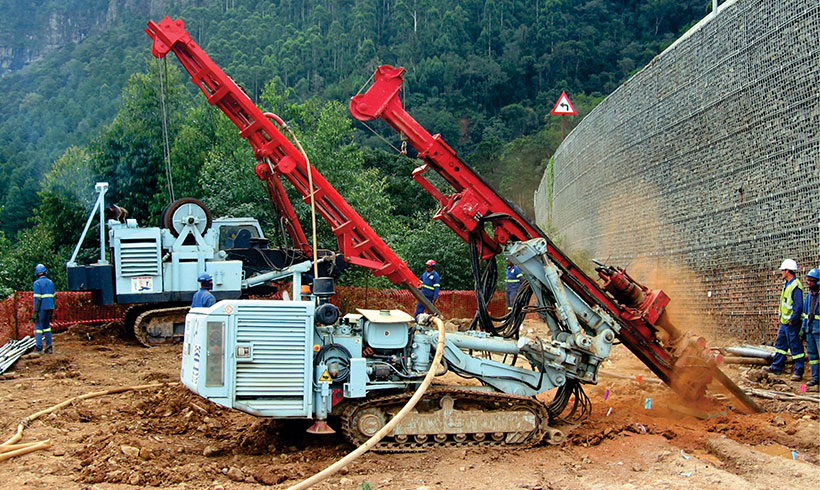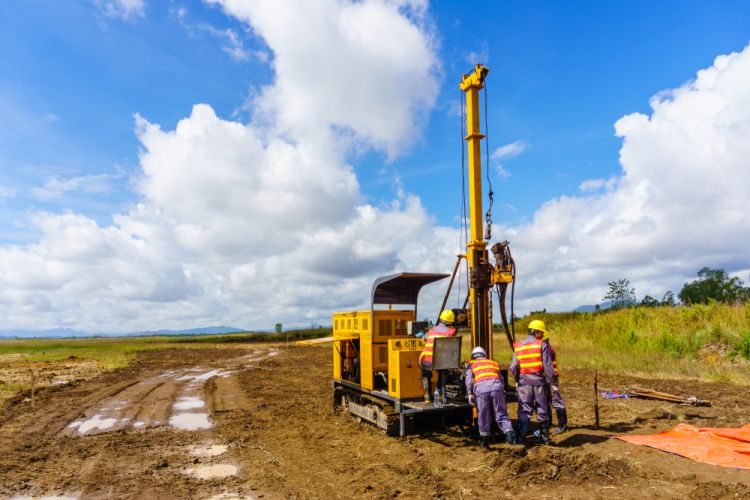The Definitive Guide for Geotechnical Engineering For Construction Projects
4 Easy Facts About Geotechnical Engineering For Construction Projects Explained
Table of ContentsThe Facts About Geotechnical Engineering For Construction Projects UncoveredThings about Geotechnical Engineering For Construction ProjectsSome Known Incorrect Statements About Geotechnical Engineering For Construction Projects Geotechnical Engineering For Construction Projects - The FactsGeotechnical Engineering For Construction Projects Can Be Fun For AnyoneNot known Details About Geotechnical Engineering For Construction Projects
These features must be checked out by geotechnical engineers to forecast their motions under different circumstances., making this analysis required.A geotechnical engineer will take a look at dirt to determine the bearing ability of the earth and suggest proper foundation kinds, such as shallow foundations, deep foundations like stacks, or specialized remedies like drifting structures for soft soils. Understanding the functions and actions of dirt and rock, in enhancement to exactly how they engage with buildings that have been put up on or within them, is one of the main explanations for why geotechnical engineering is vital.
In addition to structural planning and construction, geotechnical design is also crucial to the restoration and maintenance of pre-existing frameworks. Age-related deterioration or extra troubles might affect a framework's security and efficiency. Environmental management is accomplished with geotechnical design. Experience in air, water, and dirt high quality maintenance is used by geotechnical engineers to minimize the negative results of jobs.
Framework advancement, offshore engineering, tunnel building, and deep foundations. Risk-based style and multidisciplinary teams. These components will certainly maintain the field evolving and guarantee its continued significance in the years ahead. To summarize, geotechnical engineering is an essential technique that maintains the durability and integrity of civil infrastructure. Geotechnical designers contribute to making structure tasks efficient all over the globe by understanding the behaviour of planet products and using suitable preparation methods.
Not known Incorrect Statements About Geotechnical Engineering For Construction Projects
The fundamental stability of any type of project is necessary. Geotechnical design plays a vital function in ensuring that structures are improved strong ground, essentially and figuratively. By taking a look at soil, rock, and subsurface problems, geotechnical designers supply important understandings that aid in the style, construction, and upkeep of structures and facilities.

Geotechnical Engineering For Construction Projects - The Facts
Lab testing: Establishing the homes of soil and rock. Several prominent building tasks have actually efficiently utilized geotechnical design to ensure their security and safety and security.
As a leader in geotechnical design, BECC Inc. is devoted to providing cutting-edge and effective options that fulfill the highest requirements of high quality and safety and security., a mechanical engineer and geologist.
Some Known Factual Statements About Geotechnical Engineering For Construction Projects
Terzaghi also developed the structure for concepts of birthing capability of structures, and the theory for prediction of the price of negotiation of clay layers because of debt consolidation. Afterwards, Maurice Biot completely developed the three-dimensional dirt debt consolidation theory, expanding the one-dimensional design previously created by Terzaghi to extra basic hypotheses and introducing the collection of basic equations of Poroelasticity.
Geotechnical designers check out and establish the residential or commercial properties of subsurface problems and materials. They also make equivalent earthworks and keeping structures, passages, and continue reading this structure structures, and may oversee and examine sites, which might better involve website tracking as well as the threat evaluation and reduction of natural hazards - Geotechnical Engineering for Construction Projects. Geotechnical navigate to this website designers and engineering rock hounds do geotechnical investigations to obtain details on the physical properties of dirt and rock underlying and adjacent to a site to develop earthworks and structures for recommended frameworks and for the repair of distress to earthworks and structures brought on by subsurface problems.
Geotechnical Engineering For Construction Projects - Truths
Geologic mapping and analysis of geomorphology are typically finished in appointment with a geologist or design geologist. Subsurface expedition normally includes in-situ testing (for instance, the conventional infiltration test and cone penetration test). The digging of examination pits and trenching (particularly for finding mistakes and slide airplanes) may also be used to discover about soil conditions at depth. Still, they are often made use of to allow a rock hound or engineer to be decreased right into the borehole for straight visual and manual examination of the dirt and rock stratigraphy. Different dirt samplers exist to fulfill the requirements of various design tasks. The standard penetration test, which utilizes a thick-walled split spoon sampler, is one of the most common way to accumulate disturbed examples.

If the user interface between the mass and the base of a slope has a complicated geometry, slope stability evaluation Source is tough and mathematical service techniques are called for. Normally, the user interface's precise geometry is unidentified, and a streamlined interface geometry is assumed. Finite slopes call for three-dimensional versions to be assessed, so most inclines are analyzed assuming that they are definitely broad and can be represented by two-dimensional versions.
7 Simple Techniques For Geotechnical Engineering For Construction Projects
Producing the layout based on a working hypothesis of actions prepared for under the most possible problems. Selection of quantities to be observed as construction proceeds and determining their anticipated values based on the working theory under the most undesirable problems.
Measurement of amounts and evaluation of actual conditions. Style modification per actual problems The empirical approach is appropriate for building that has currently begun when an unanticipated advancement takes place or when a failing or crash looms or has actually currently occurred. It is unsuitable for projects whose design can not be altered throughout building.